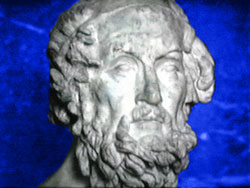New look at Homeric epics
 Odysseus was Dutch and Trojans were of Finnish descent
Odysseus was Dutch and Trojans were of Finnish descent
Italian engineer Felicce Vinci proposes an interesting hypothesis in his book “Homer in the Baltic.” According to him, Odysseus was not Greek but Dutch and all events portrayed in the Homeric epic stories in reality took place around Scandinavia instead of the Mediterranean region.
It has already been noted by scholars that certain descriptions of landscapes in Homer’s “The Iliad” and “The Odyssey” did not quite match those landscapes of the Mediterranean. Plutarch used to assume that the island where Odysseus had been captured by Calypso was in fact situated in North Atlantic. According to Homer, the city of Troy lies by “boundless Ogygia”, “five days' sail from Britain”.
Author of the sensational book found some places westwards of Helsinki, by the Gulf of Finland, names of which were surprisingly close to those cities-allies of Troy. Homer describes Troy’s landscape as hilly; he says the city lies between two rivers. That is exactly where Finnish village of Toy is situated. Italian author claims that’s where we should look for the real Troy!
Armory and clothes, described by Homer, very much resemble those worn by Dutch warriors of the Bronze Age. Also, those ships described by Homer found huge resemblance in those ships used by Baltic peoples of that time. Defensive installations, walls of Troy more likely look like fortresses of Nordic people, made of wood and stone. Vinci's book provides plenty of such examples.
According to Vinci, archaeologists failed to find any traces of such peoples as Argeioi, Danaioi and Achaioi (the names used by Homer) in the Mediterranean region. These peoples today inhabit the Baltic region; they are Danes, Polish people and are called Danes, Poles and Laplanders.
Historians have not yet expressed their opinions in regards to Vinci's hypothesis.
Subscribe to Pravda.Ru Telegram channel, Facebook, RSS!





